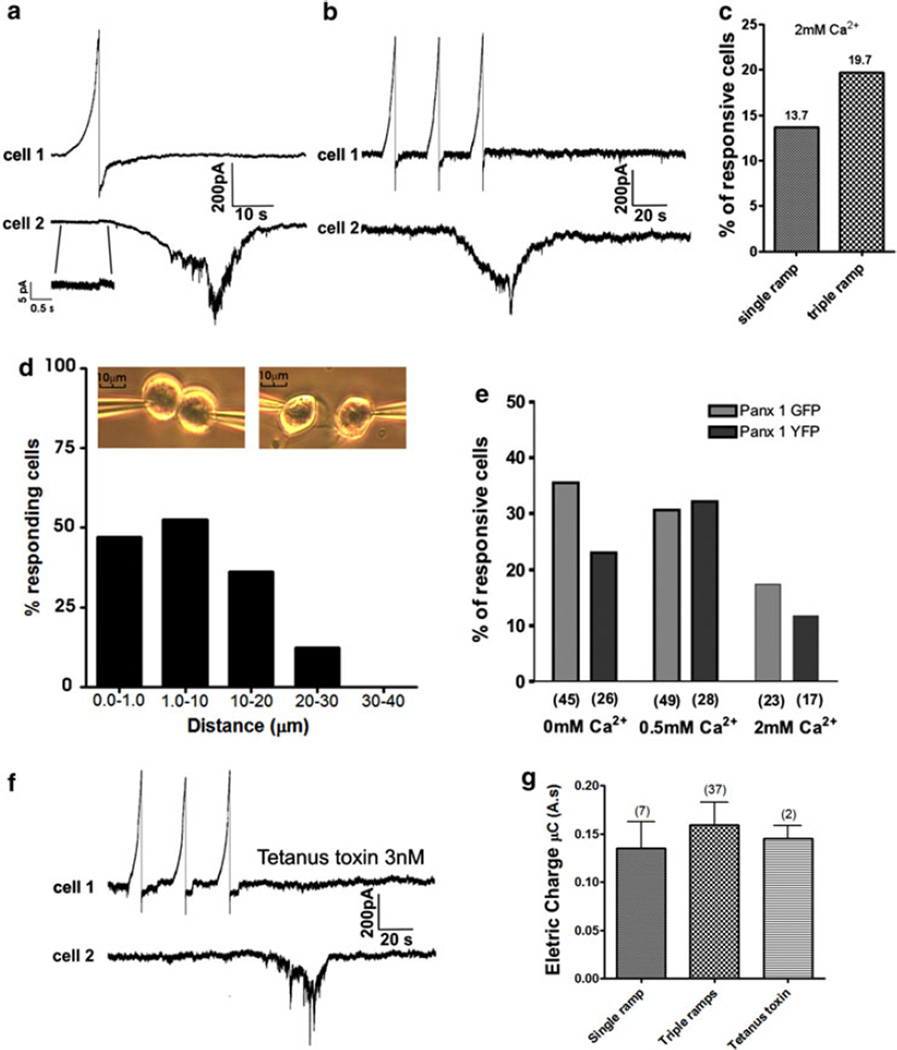Fig. 1.
Paired recordings from Pannexin1 transfected Neuro2A cells demonstrate that currents evoked by depolarizing voltage ramps (−60 to +100 mV) lead to responses in adjacent cells that are dependent on distance and do not require extracellular Ca2+. a Response of a cell to which a voltage ramp was applied (top trace) is shown to be followed by a larger, long lasting inward current in an adjacent cell (lower trace). Note that in some cell pairs a low degree of junctional coupling was present (gj = 32 ± 12 pS, recorded from 5 cell pairs in which junctional conductance was nonzero), b representative traces for a triple ramp protocol. Inward currents were similar to those in the cell pair illustrated in part A following the ramp applied to the first cell. c Quantification of responsive cell for the single and triple ramps protocols with 2 mM Ca2+. d Quantification of the percentage of responding cells as a function of distances separating them from the depolarized cell. First bar represents cells likely in direct contact. Note that as distance increased beyond 20 µm, the percentage of responding cells dramatically decreased. Insets show representative photographs acquired for the quantification of the percentage of depolarized Neuro2A cells as a function of distance separating them. e Percentages of responsive cells obtained in Neuro2A cell transfected with mPanx1 pEYFP or GFP-N1 at high extracellular Ca2+ (2.0 mM), at low extracellular Ca2+ (0.5 mM) and in the absence of extracellular Ca2+. Note that cell responsiveness does not depend on extracellular Ca2+ concentration and is actually enhanced at low extracellular Ca2+ levels. Numbers of voltage clamped cells are in parentheses. f Representative traces obtained following tetanus toxin application. g Inward currents (quantified as electrical charge) were not significantly different when induced by single or triple ramps applied to the first cell or when recorded in the presence of tetanus toxin. Numbers in parentheses represent number of cells for which currents were observed in second cell and analyzed

